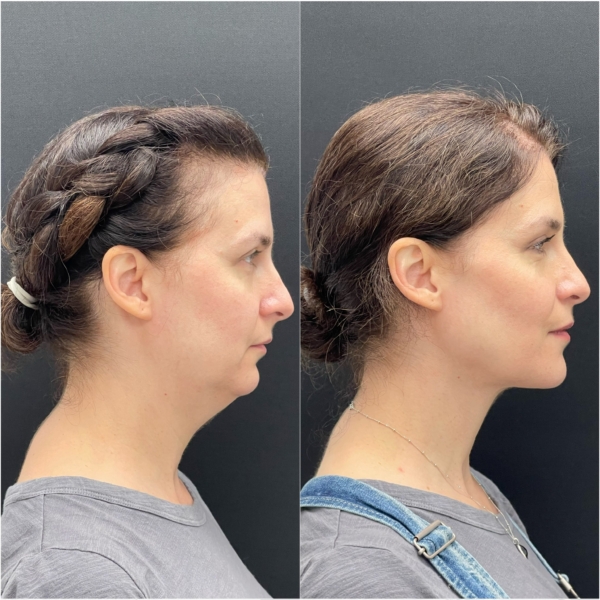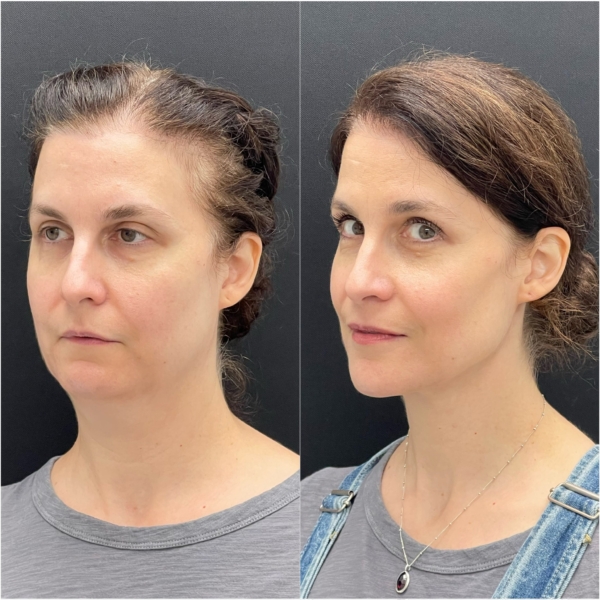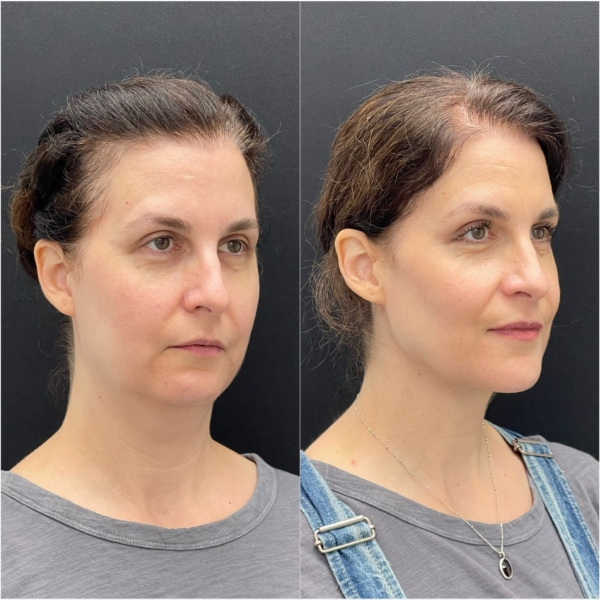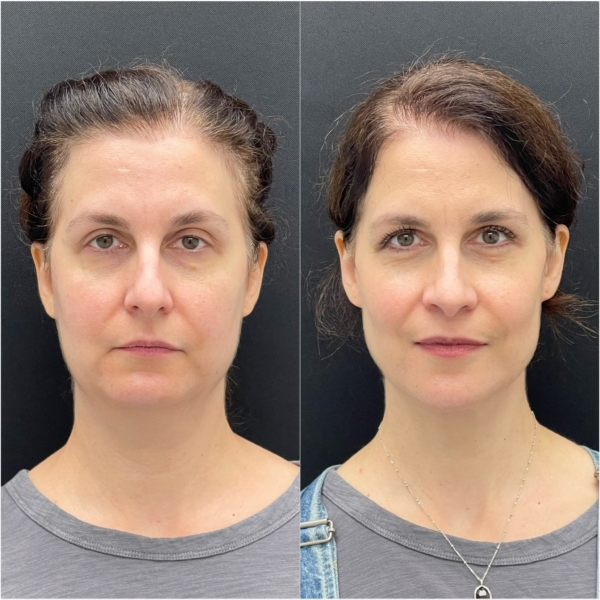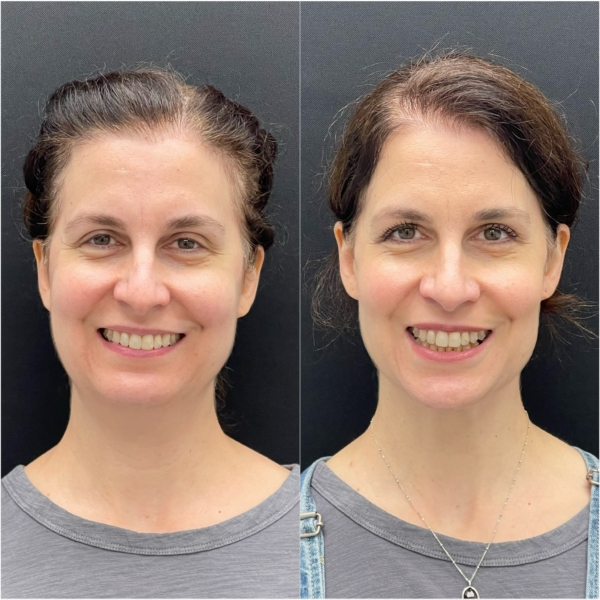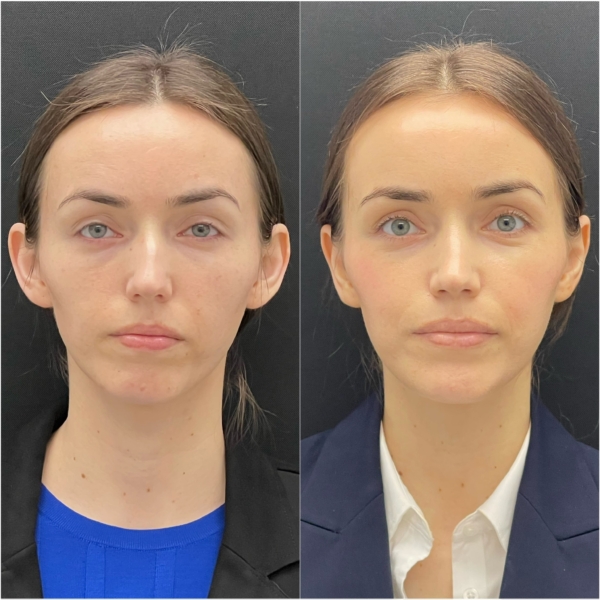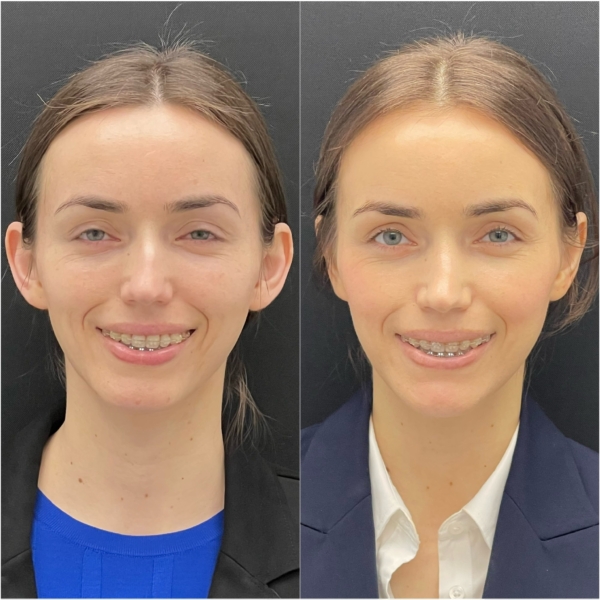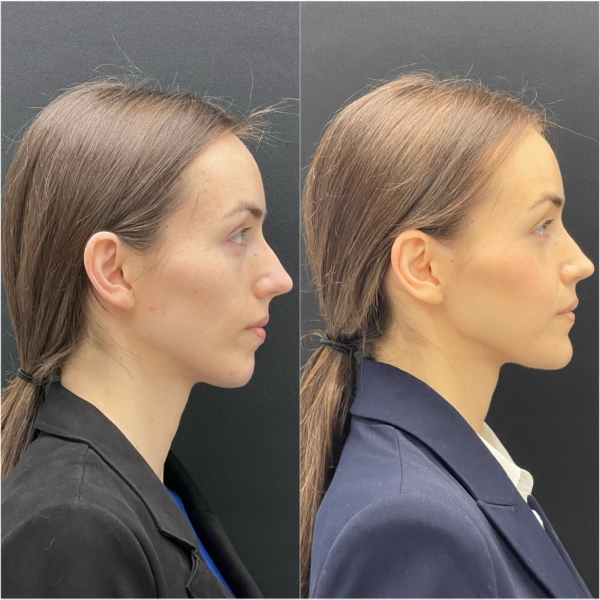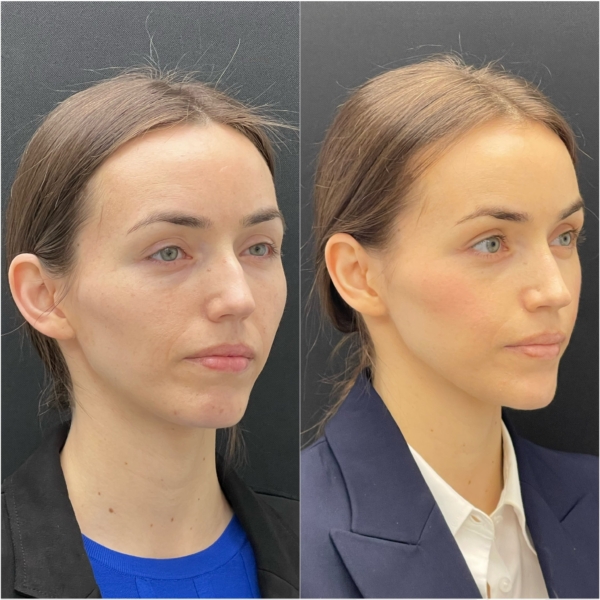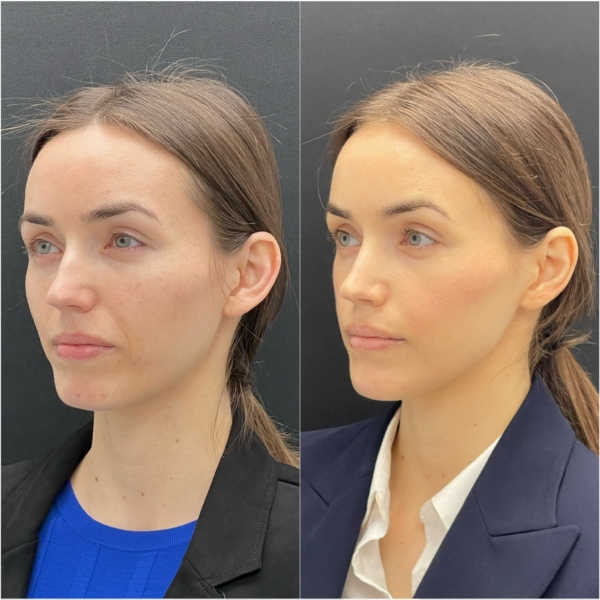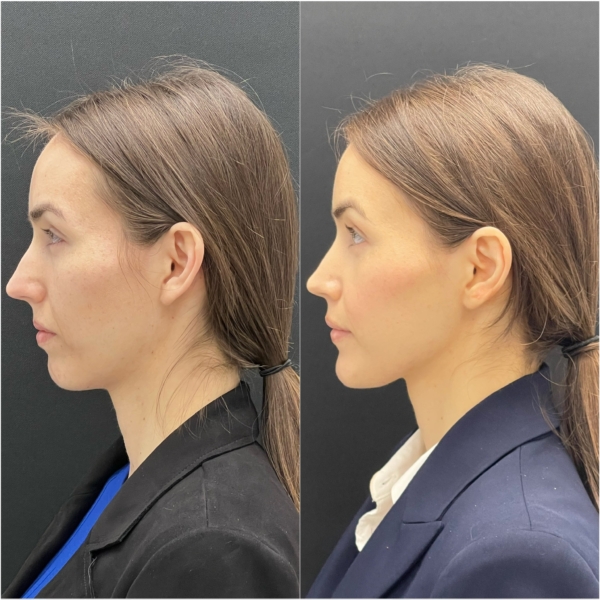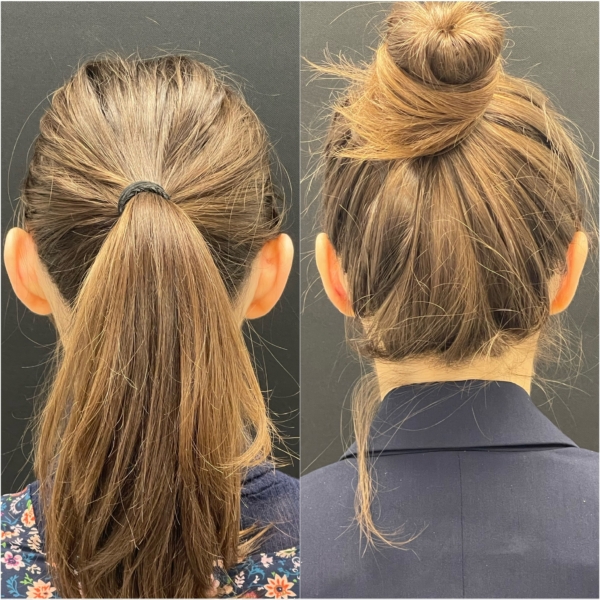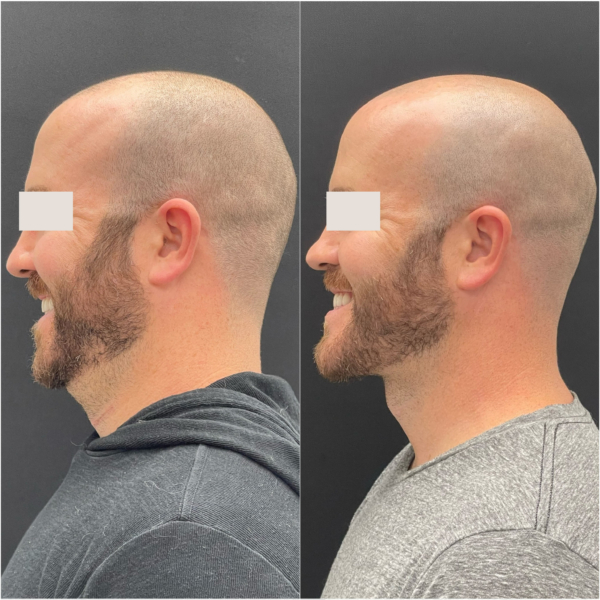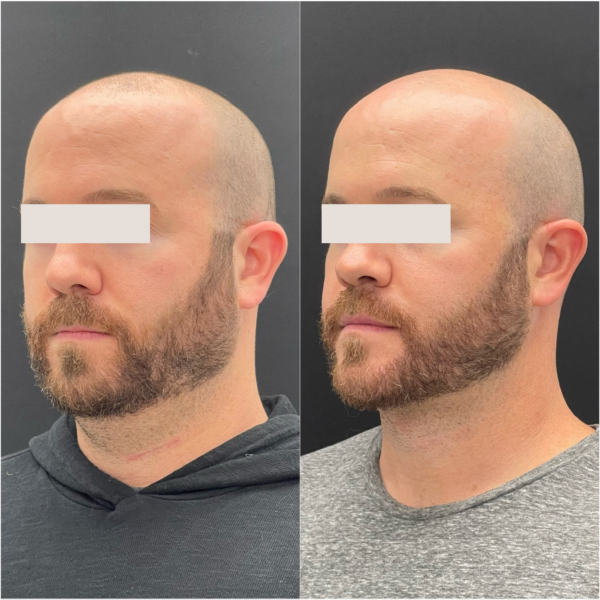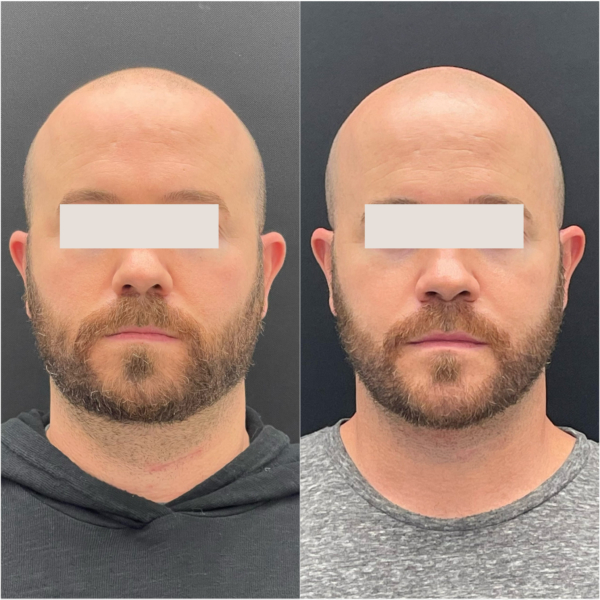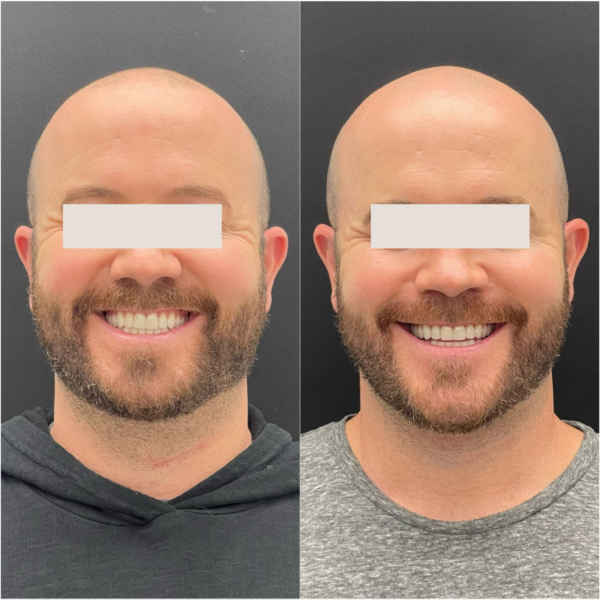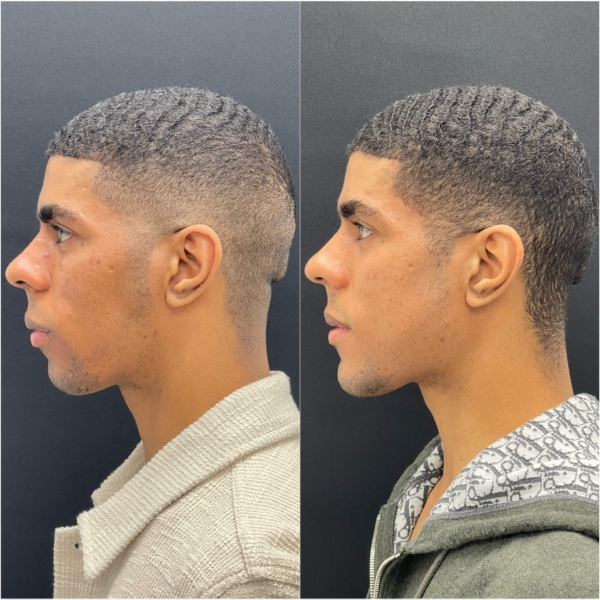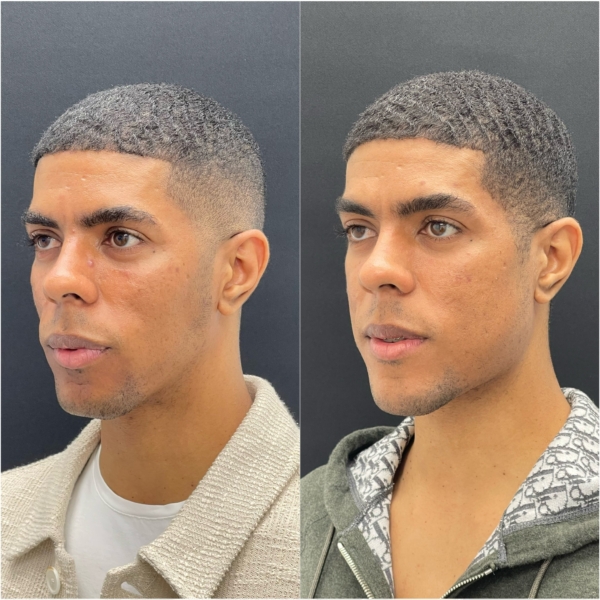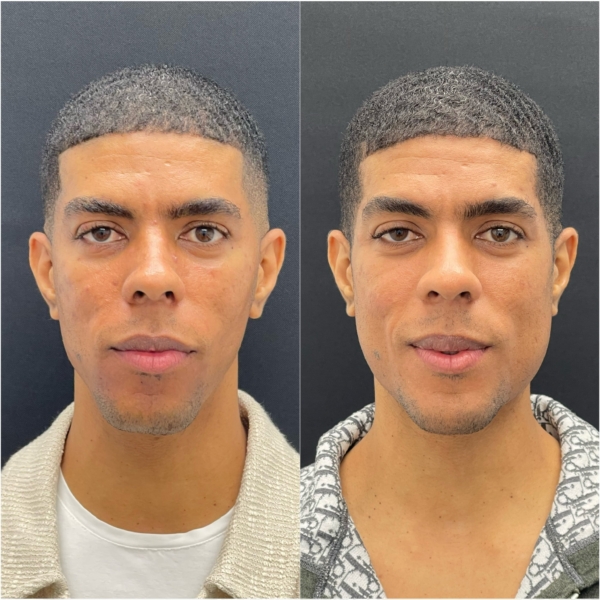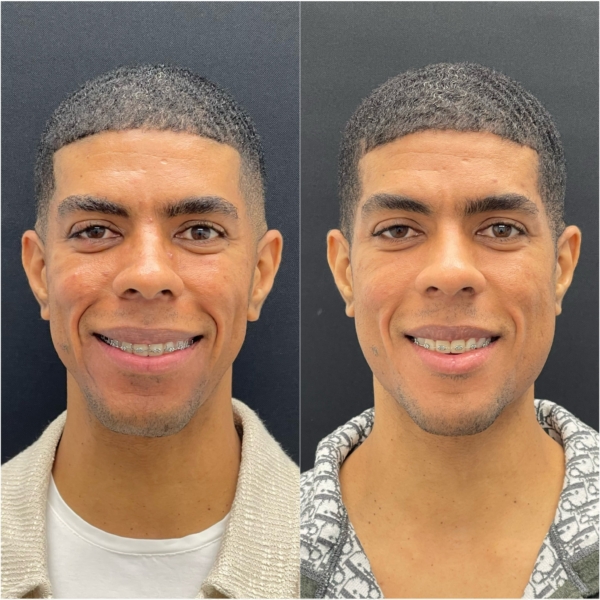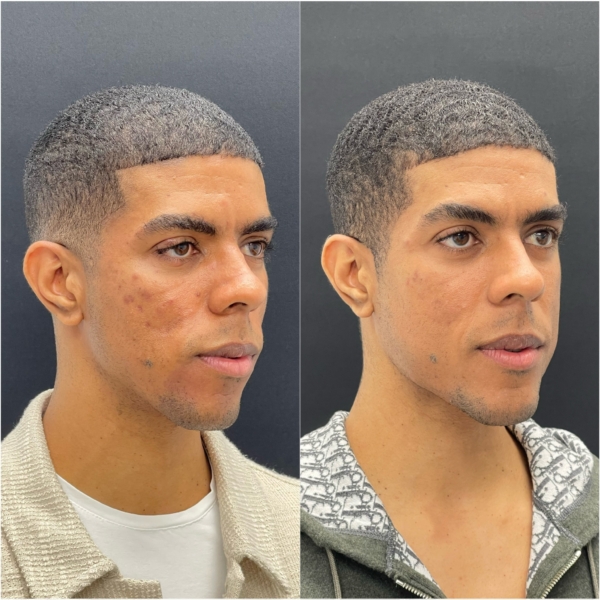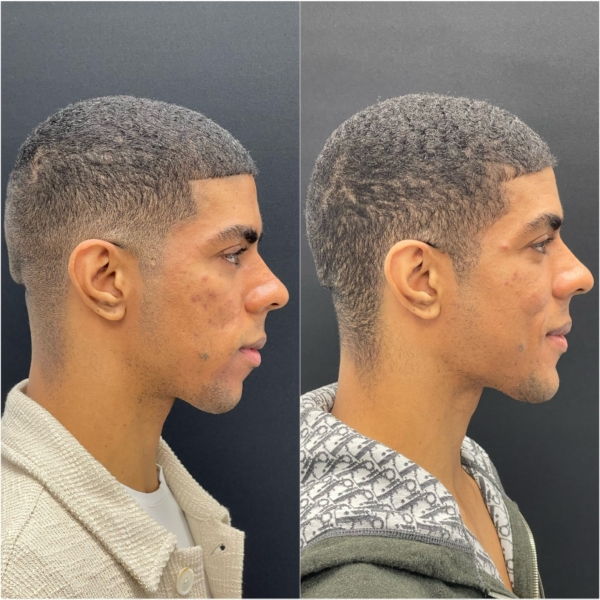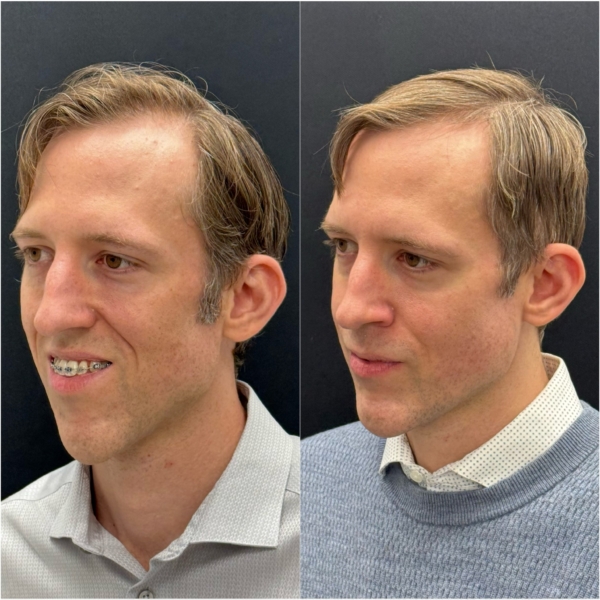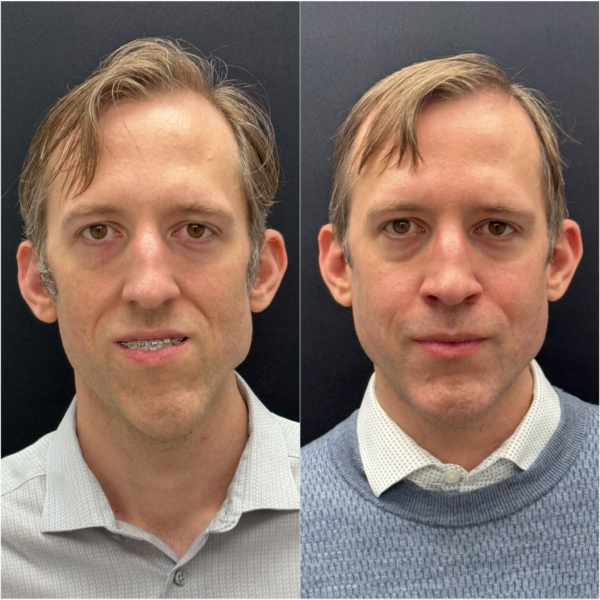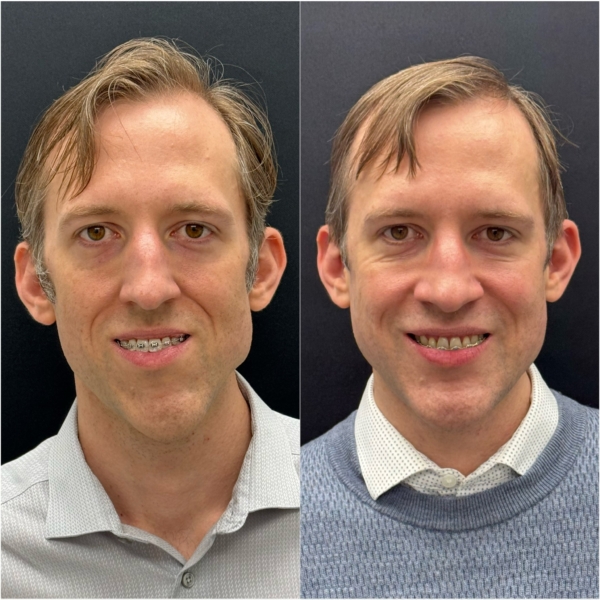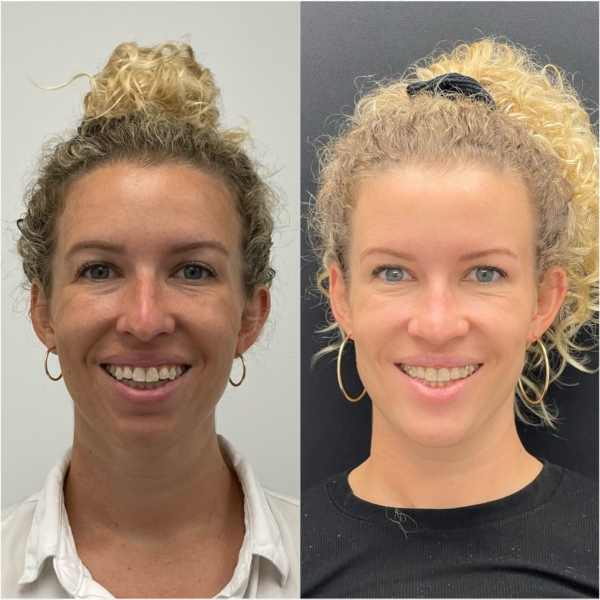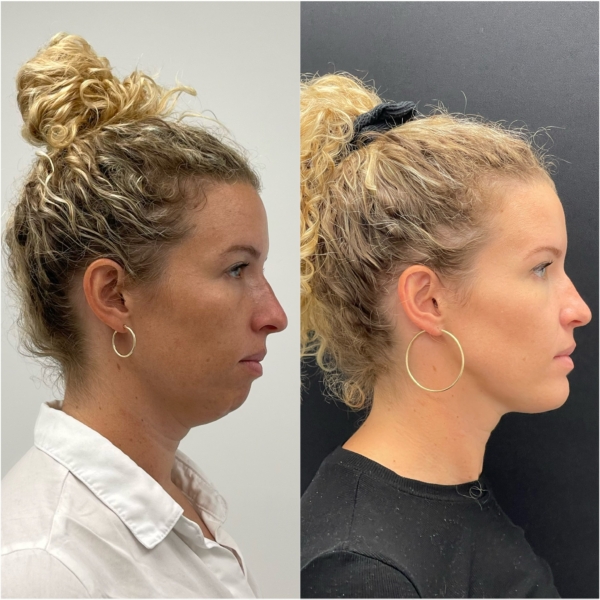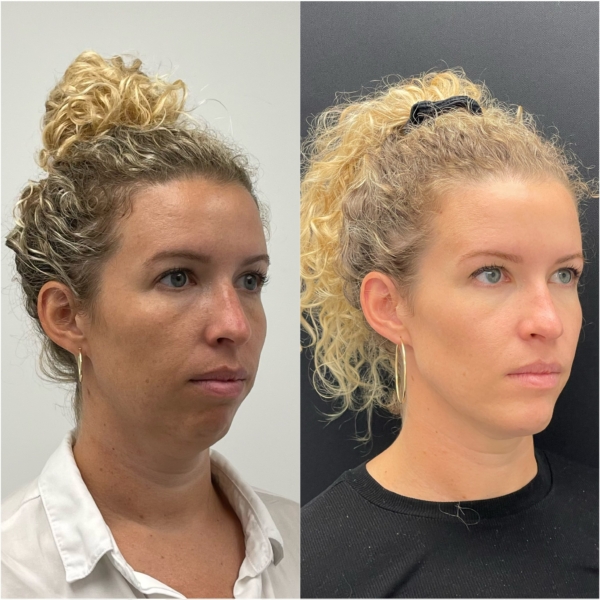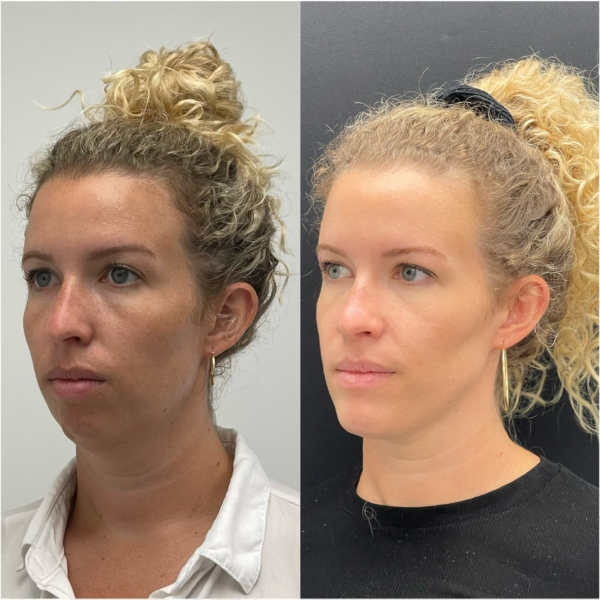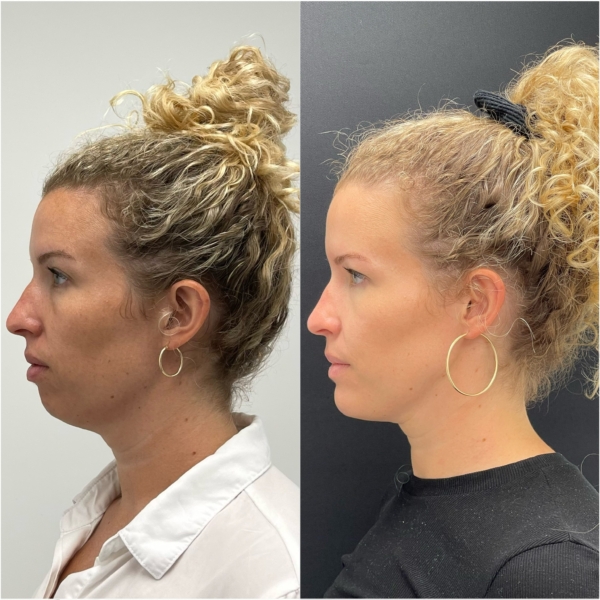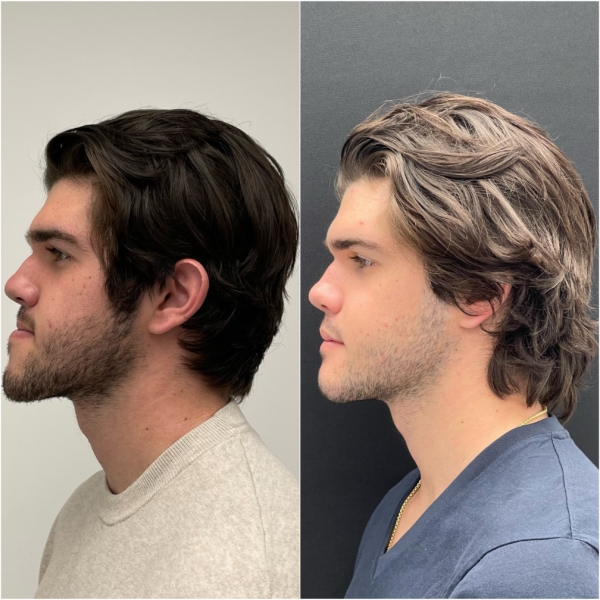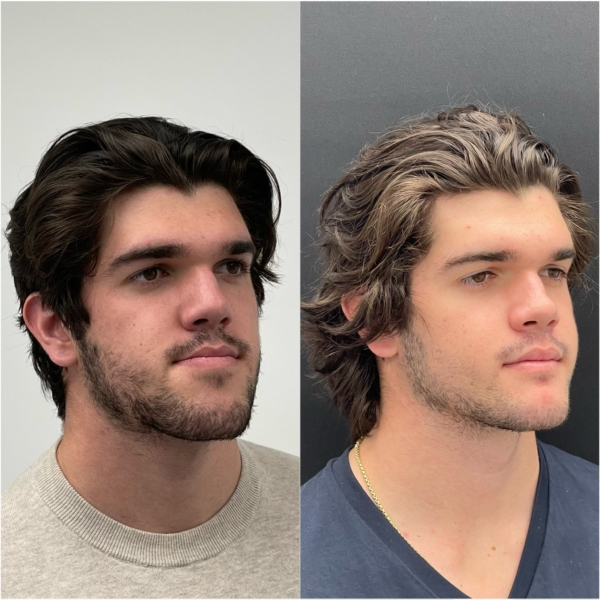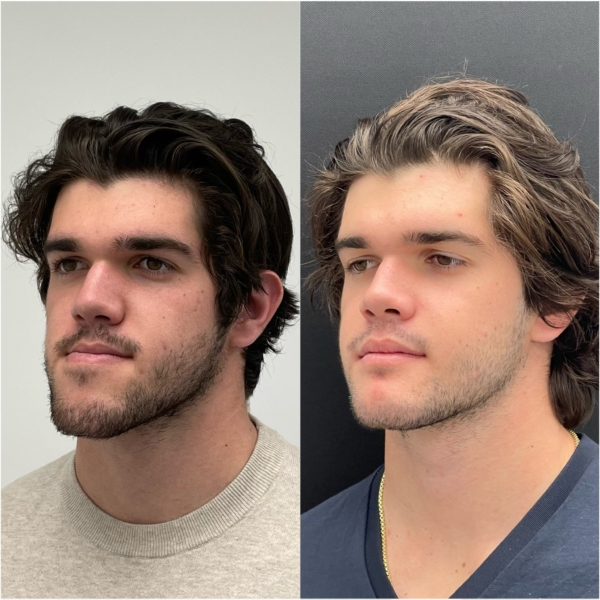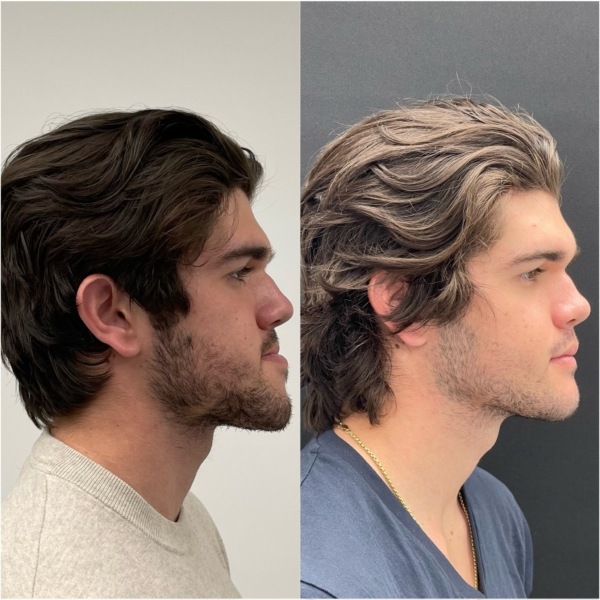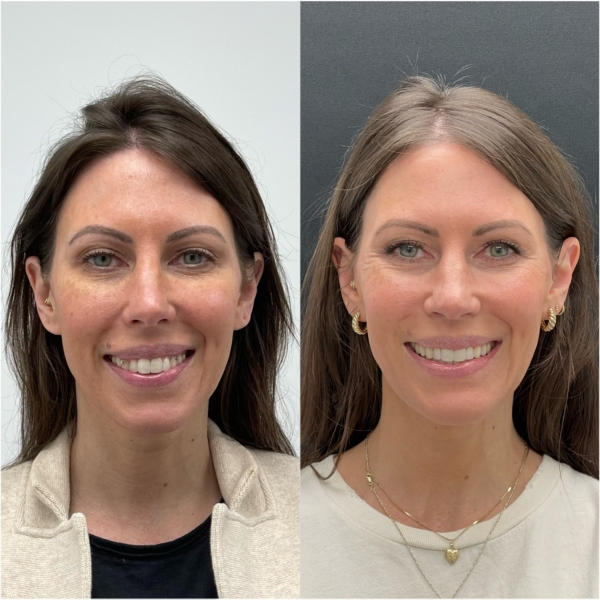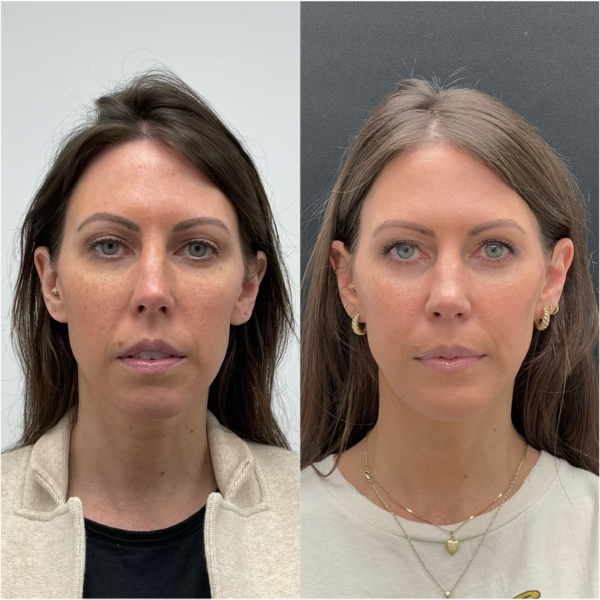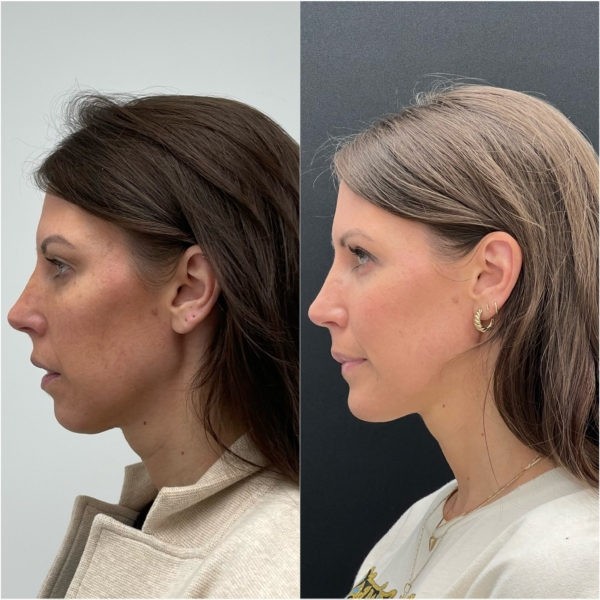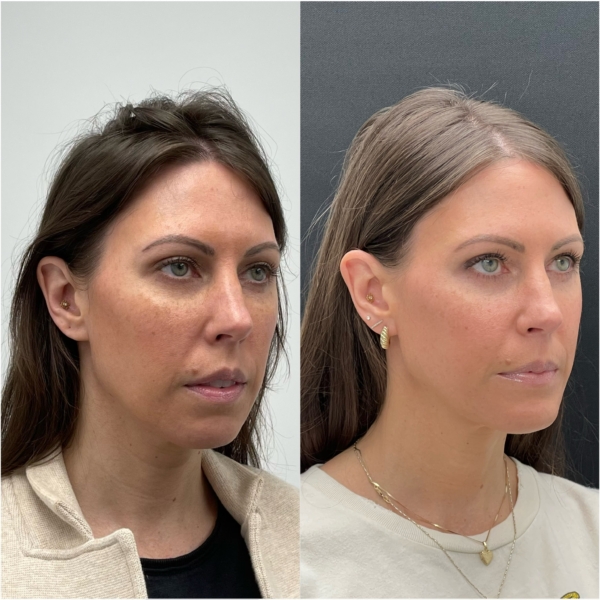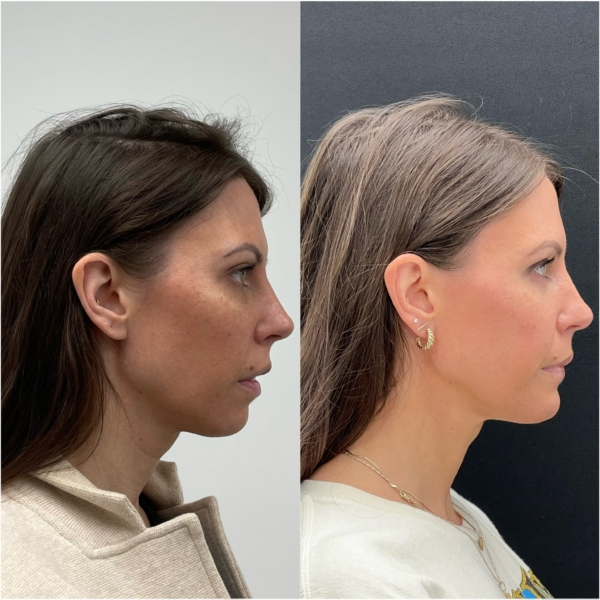Jaw / Orthognathic Surgery (Custom)

What is Orthognathic Surgery?
Jaw (orthognathic) surgery is surgery of one or both jaws to reshape the face and jaw bone structure. This may be performed to help a patient’s bite, chewing, speaking, airway/sleep apnea, myofascial pain, or for purely aesthetic reasons by improving the symmetry, bone structure, and proportions of the face.
Advanced imaging techniques are used to plan the surgery and design custom-made hardware (plates/screws) for maximal precision and predictability. This hardware typically remains in place for life but can be removed if desired after a healing period. The entire surgery is performed through small incisions inside the mouth. This procedure is performed under general anesthesia and typically involves one overnight facility stay. Most patients require some orthodontic treatment (Invisalign) both before and after surgery.
When performed for the primary goal of treating obstructive sleep apnea (OSA), orthognathic surgery is referred to as Maxillomandibular Advancement (MMA). The primary objective is to bring the upper jaw, lower jaw, and chin forward to help maintain a more open airway, especially during sleep.
Patient Results
View before and after photos of our patients who had this procedure.

Benefits of
Jaw Surgery
- Aesthetic improvement of the neck, chin, and jawline contour, facial profile, and often the nose and lips
- Achieve proper alignment of the jaw and bite
- Improvement of airway and obstructive sleep apnea
- Enhanced chewing, speaking, and breathing
- Relief from pain/discomfort associated with misalignment (i.e. TMJ disorders)
Why is a CT scan taken at the consultation?
A CT scan is required for proper diagnosis and evaluation of the bone structure so that jaw surgery can be planned more accurately. There are many different techniques in bone cut patterns that are specific for a patient’s bone structure and other anatomy, which can only be confirmed with proper imaging. It is also needed to rule out any other complicating anatomical factors that would affect decisions regarding your treatment plan.
Why is orthodontic treatment needed in conjunction with jaw surgery?
Typically it is important for patients to be under the care of an orthodontist before and after jaw surgery. Even if their bite is stable preoperatively, an orthodontist might be involved to 1) establish a better occlusion (bite) that will allow the jaw surgery movements to be more ideal, and 2) stabilize the occlusion after surgery (because it is not uncommon for tiny shifts to occur after surgery). It is important to note that this does not apply to an isolated chin procedure (genioplasty) as those cases do not involve the bite.
How to choose an orthodontist to use before and after my jaw surgery?
Surgical orthodontics is very different from non-surgical standard orthodontics. It is important that the orthodontist you choose has experience with surgical orthodontics and has a complementary treatment style with your surgeon.
Why was genioplasty recommended with my jaw surgery?
Not every jaw surgery requires genioplasty; however, in most cases when the jaws are not ideally developed, the chin is also not ideally developed. Repositioning the chin bone at this time allows for an ideal profile and aesthetic bone structure. Also, many times with asymmetries of the jaw, there is also asymmetry at the chin, which needs to be corrected as well.
What makes this surgery “custom”?
Custom guided jaw surgery can have different meanings. The way it is used in our practice describes a process where the surgery is performed virtually on a CT scan of the patient’s facial bones with soft tissue predictive images and sketches. When the desired facial aesthetic is achieved, the surgeon customizes the precise position of the bone cuts and custom-designs the titanium plates that will be used to fixate the bones into their desired positions. This is a highly accurate and precise method of jaw surgery within 1-2mm of precision, allowing for smaller surgical access points (less invasive), quicker surgical times, more stable plate fixation, and therefore better results overall (aesthetically and functionally) than other methods.
Are there scars?
No. For our standard orthognathic and genioplasty procedures, all of the incisions are inside the mouth. These incisions are placed in the deep folds of the mouth and are not visible once healed during speaking and smiling. We typically use sutures that dissolve on their own after a period of 1-2 weeks, which do not require removal. (For some cases, the surgeon will perform additional facial aesthetic procedures, and those procedures may require separate skin incisions.)
What type of anesthesia is used?
Jaw surgery is typically performed in a hospital or accredited surgical center, under general endotracheal anesthesia using a breathing tube to secure the airway. Most patients stay for observation at least one night before going home for comfort, monitoring, and early feeding adjustments.
How long does this surgery typically take?
For standard orthognathic surgery that includes the upper and lower jaws as well as genioplasty, the surgery can take between 2-4 hours including anesthesia prep time and waking up from anesthesia.
Will I need to stay overnight at the surgical facility?
Yes, most patients stay for observation at least one night before going home for comfort, monitoring, and early feeding adjustments, though some are able to return home the same day.
How soon can I travel after my surgery?
We typically ask patients to remain in town for a period of 1-2 weeks, depending on the surgery, before flying. However, car rides of 2-4 hours are okay the following day in most cases. (We would still like to see you for a post-op visit at the one-week mark.)
Do you recommend hiring a private nurse to help with recovery?
On a case-by-case basis. For patients who opt for private nursing, the benefits are: 1) One-on-one direct attention and care, 2) Help and teaching with postoperative wound care and hygiene, and 3) Surveillance for proper postoperative healing. Not all cases require private nursing, and our team will guide patients on who we recommend this for. Our experience has been that patients who do opt for this find it to be tremendously valuable.
What to Expect
After Surgery
- Stretchy elastics are placed to keep the bite in a stable position immediately after surgery; the jaws are not wired shut
- For most patients there is a period of time that they will be on very soft foods. This is tailored to each patient based on their specific type of surgery
- Most patients can resume work (and are considered “restaurant-ready”) within 1-2 weeks
- For social events such as weddings (guest), graduations, or holidays, one should allow at least 3-4 weeks for recovery
- Exercise: Very light activity such as a brisk walk or a light stationary bike is encouraged as soon as the patient feels ready for it after surgery. Moderate exercise is usually resumed in about one week and heavy exercise in three weeks
- 80-90% swelling is usually down by 2 weeks post-op, 90-95% is down by 3 months, and the final 5-10% fades gradually over the course of a year
- All incisions are placed inside the mouth, no scars are left on the face. Sutures inside the mouth dissolve on their own
- Orthodontic visits resume within a few weeks to fine-tune the bite
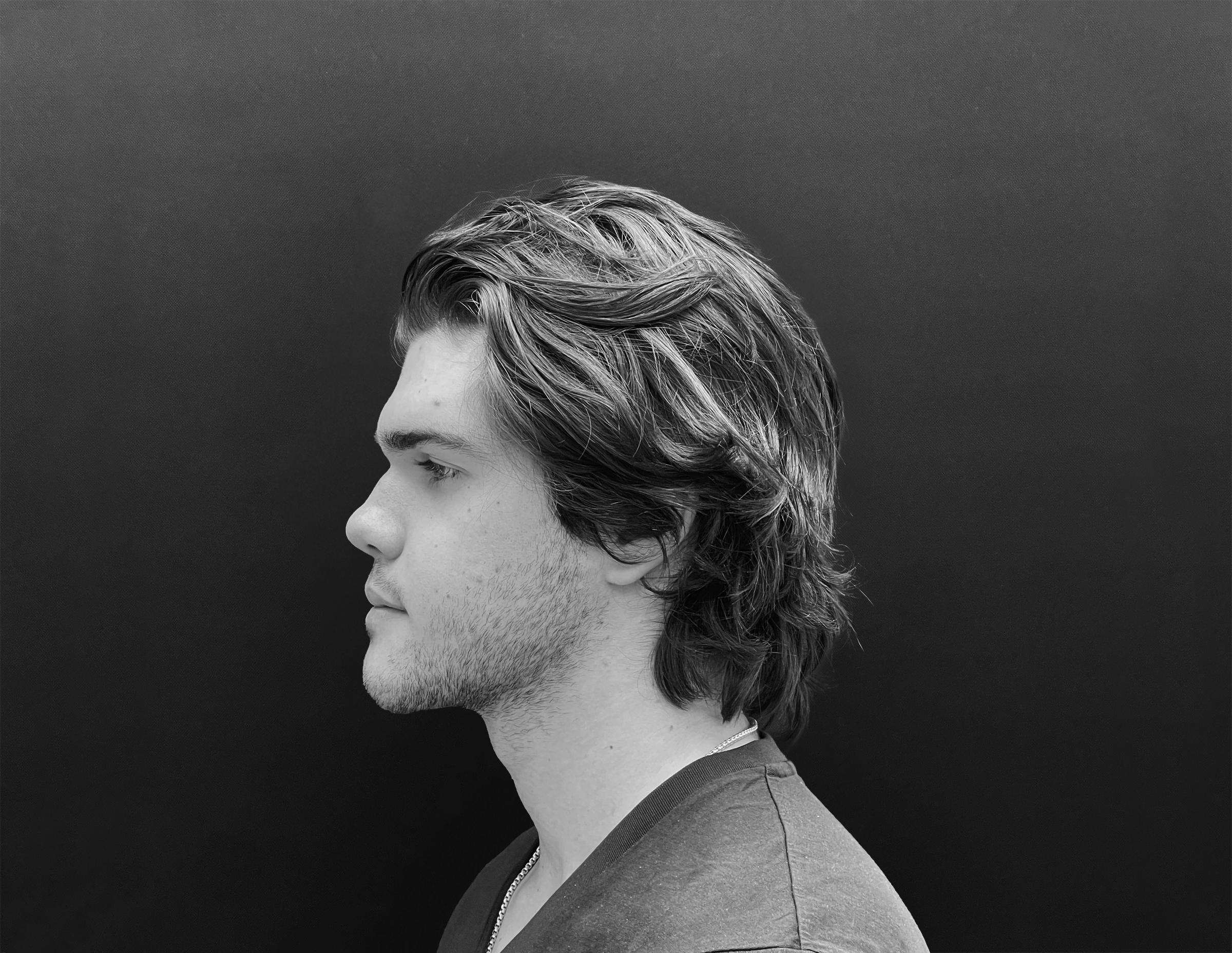
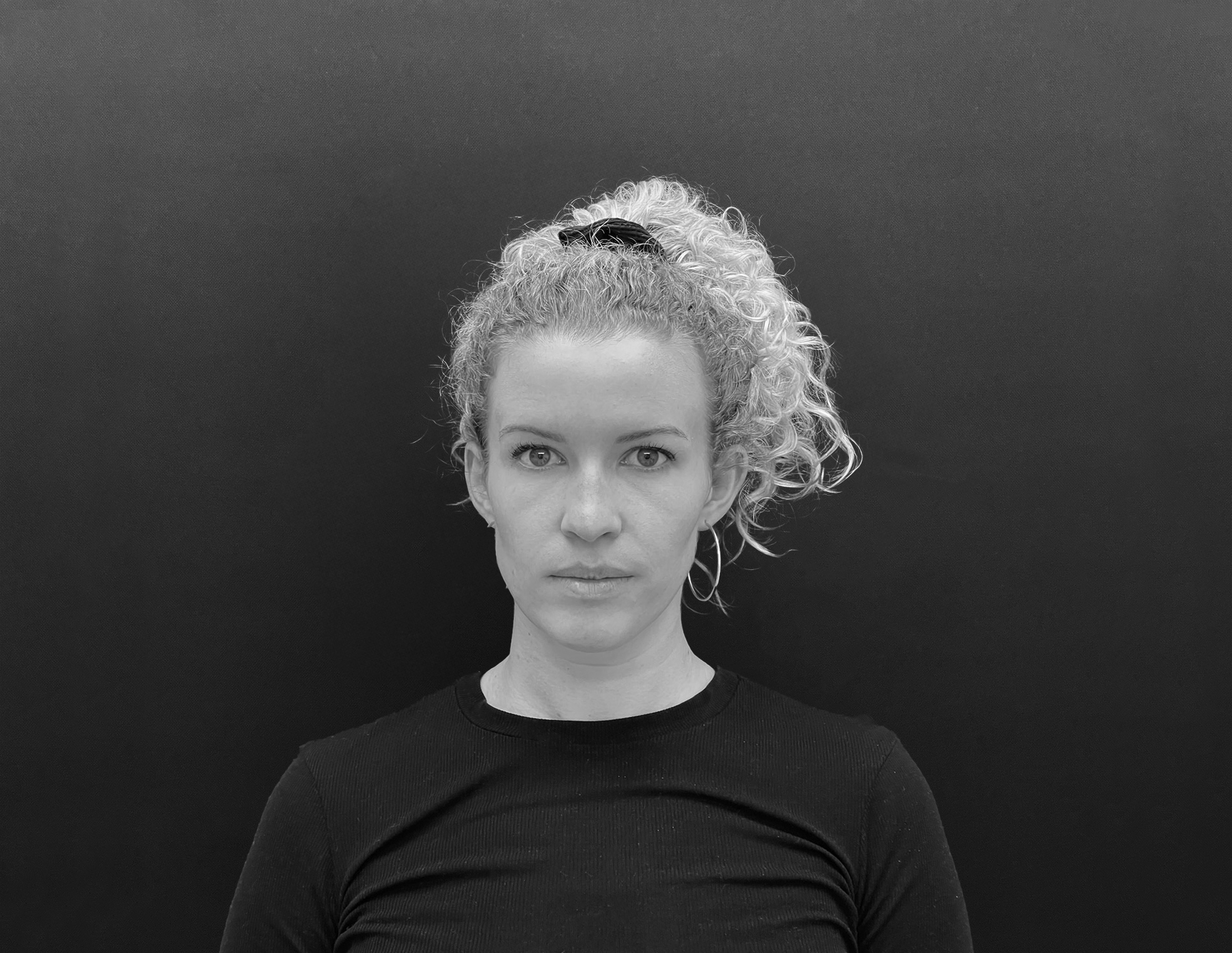
Maxillomandibular Advancement (MMA)
Sleep Apnea Surgery
Orthognathic surgery, when performed for the primary goal of treating obstructive sleep apnea (OSA), is referred to as Maxillomandibular Advancement (MMA). The primary objective is to bring the upper jaw, lower jaw, and chin forward. This will bring the attached soft tissues of the soft palate and base of tongue forward and help to maintain a more open airway, especially during sleep, when these soft tissues tend to collapse. The nasal airway is also typically increased by the movement of the upper jaw, in addition to the pro-pharyngeal airway.
The technique is essentially the same as with traditional orthognathic surgery, and incisions, bone cuts, and fixation are largely the same. The degree of movement, however, is driven by airway dimensions moreso than facial aesthetics. The rule of thumb is that for high-moderate or severe OSA, there should be one centimeter or more advancement at the obstruction. For mild or low-moderate OSA, this may allow a smaller movement. Many patients are concerned about appearance after MMA surgery; However, in the vast majority of cases, over-advancement is not needed, and patients find the aesthetics postoperatively to be much improved, as they look younger, with more structural support of the skin in the cheeks, jawline, and neck, and are also more well-rested. We commonly use additional procedures to further enhance aesthetic outcome with MMA surgery such as buccal fat reduction, submentoplasty, or liposuction.
Facial Asymmetry Correction
In most cases of facial asymmetry, the jaws play a major component in what people see as being off-centered. Asymmetries can be at any level of the face: head, neck, eyes, ears, nose, lips, chin, etc. But for most people, the eye sockets and the base of the skull are relatively stable and symmetrical. The jaws are where the asymmetry really lies in most cases.
By using orthognathic surgery to reposition the jaws into a midline position, you can balance out most facial asymmetries. Many times it also requires movement of the chin point as well as the upper and lower jaws. Slanting of the upper jaw, the position of the jawline angles, and the position of the chin can all be corrected and brought to a midline point. Often patients will also benefit aesthetically from changes in vertical and anterior/posterior directions, which is done simultaneously with correction of the asymmetry.

